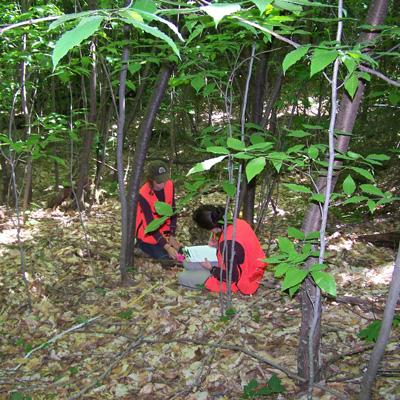Assessing Biodiversity, Forest Condition and the Effects of Management in the Northern Forest: Protocol Development and Field Trial in the Adirondack Park

Changes in socio-economic and ecological factors are re-shaping the Northern Forest. Ecological monitoring is needed to ensure continued forest health. NSRC researchers customized the monitoring protocols of the National Park Service Inventory and Monitoring Program and the USDA Forest Service Forest Inventory and Analysis Program to detect changes in patterns of forest structure (vertical and horizontal arrangement of trees and plants), condition, and species diversity. They tested their new monitoring system by using it to evaluate the effects of an intensive harvest of American beech in the Shingle Shanty Preserve and Research Station of the Adirondack Park.
Researchers set up 29 sampling plots in areas where beech was intensively harvested and in standard, partially-harvested forest stands. In each plot, they measured 14 ecological indicators including stand structural class, tree canopy closure, dead tree abundance, coarse woody debris on the ground, tree condition, tree regeneration, understory plant diversity, amphibian species diversity, and invasive exotic plants. Researchers discovered that three years after harvesting beech, any effects of beech sprouting did not result in a widespread change in the makeup of the forest compared to partially-harvested stands.
In general, the modified monitoring protocol provides sufficient information to allow forest managers to address a diversity of questions relating to different management objectives. This monitoring protocol not only addresses forest structure as it relates to silviculture (methods of regenerating and growing trees), but also focuses on forest biodiversity, which is likely to be sensitive to continued environmental and habitat change.
